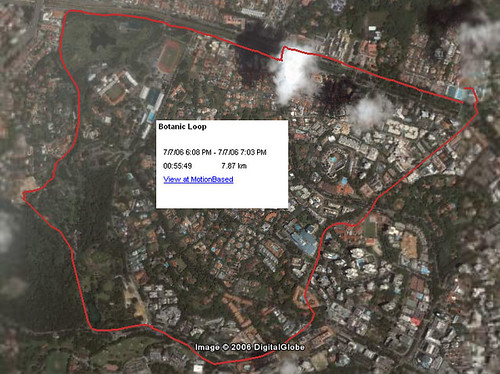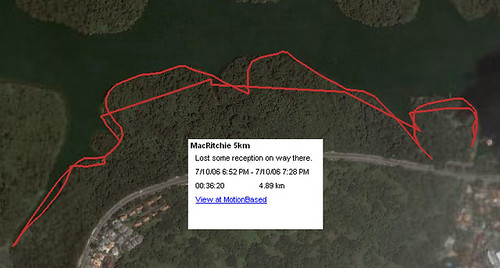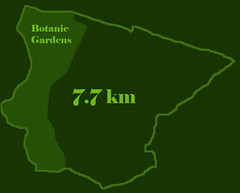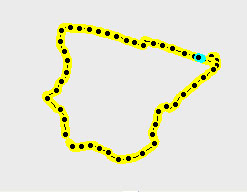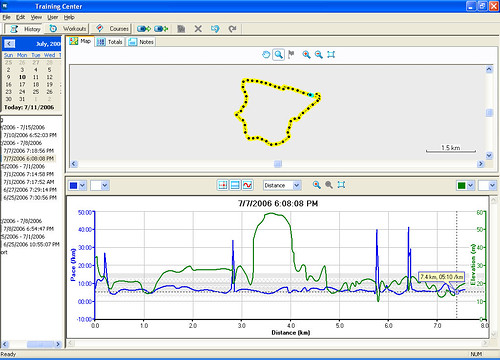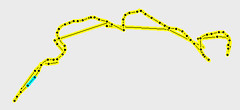Asics GT-2110 vs Asics Jr. GT-2110
Thursday, July 27, 2006
I like my Asics GT-2110. It fits great, but it is a pretty pricey shoe. I put down $140 for my current pair.
While browsing in the local sports shop, I discovered a possible match for me: the Asics Jr. GT-2110 for kids. I saw a pair at World of Sports and it was retailing for $89! And they have my size! To compare the adult and the kid version, I put one on each side and walked around a bit.
The kids' one did not feel as comfortable but I suspect that it had nothing to do with the quality of cushioning (as the salesman said) but with the inferior sockliner. These are the specs of both shoes:
It is hard to understand what these specs really mean. The way I understand it though, you get as good a cushioning with the Jr shoe as with the adult shoe, but you don't get any of the fancy high-tech stuff like IGS, PHP, Space Trusstic System, etc. The Jr. shoe also comes with an extra-large toe box (which looks horrendous and is completely unnecessary for me). I think they think that teenagers bang their toes into things a lot.
Anyway, I'm going to file away this thought until I need it.
(note: for those interested in the Jr. shoe, I wear a size 5 or 5.5 in adult and the size 6 in kids was almost too large for me.)
While browsing in the local sports shop, I discovered a possible match for me: the Asics Jr. GT-2110 for kids. I saw a pair at World of Sports and it was retailing for $89! And they have my size! To compare the adult and the kid version, I put one on each side and walked around a bit.
The kids' one did not feel as comfortable but I suspect that it had nothing to do with the quality of cushioning (as the salesman said) but with the inferior sockliner. These are the specs of both shoes:
Asics Jr. GT-2110
Features
GEL® Cushioning Systems
AHAR® Solid Rubber Outsole with Stitched Toe Cap
DuoMax® Medial Post
Full Length SpEVA® Midsole
Benefits
Provides maximum rearfoot and forefoot shock attenuation
Extended toe cap helps enhance durability
Provides stability and shores the midfoot
Enhanced midsole durability and cushioning
Asics GT-2110
Features
Impact Guidance System (I.G.S.®)
DuoMax®
SpEVA® Midsole Material
Space Trusstic System™
Benefits
ASICS® design philosophy that uses linked componentry to encourage optimal gait while allowing for natural foot movement from heel strike to toe-off
Ensures that the shoe maintains proper support for the foot during the critical transition from heel strike to toe-off
Provides superior shock attenuation along with a cushioned ride and enhanced durability
An advanced system that creates a pocket between the Trusstic System® device and the midsole, allowing for greater midsole deformation and more efficient foot function
It is hard to understand what these specs really mean. The way I understand it though, you get as good a cushioning with the Jr shoe as with the adult shoe, but you don't get any of the fancy high-tech stuff like IGS, PHP, Space Trusstic System, etc. The Jr. shoe also comes with an extra-large toe box (which looks horrendous and is completely unnecessary for me). I think they think that teenagers bang their toes into things a lot.
Anyway, I'm going to file away this thought until I need it.
(note: for those interested in the Jr. shoe, I wear a size 5 or 5.5 in adult and the size 6 in kids was almost too large for me.)
